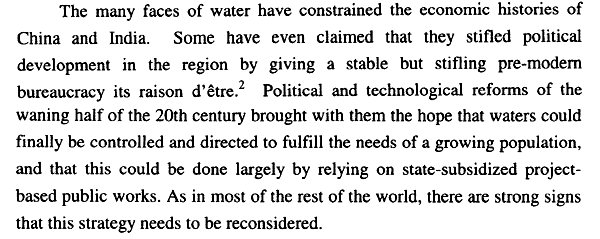China's Water Resources Facing The Millennium
James E. Nickum
Visiting Professor, Dept. of Advanced Social and International Studies
University of Tokyo
A Word at the Gate
Our pending entry into the 21st century and the third millennium is in reality the crossing of an imaginary threshold with no intrinsic meaning except to our computers. Nonetheless, it is a good time to reflect, especially about the past that we know and the future that fresher generations must face. The past fifty years in particular have been extraordinarily dramatic ones for China and India, politically, economically, demographically, and in terms of resource use and abuse. The next fifty years promise equal or greater drama, but played out under vastly different rules, and with uncertainty as to whether it will be a romance or a tragedy.
Here we speak of water. The progress of the past half-century in agriculture, industry, energy, and urbanization has largely been premised on increases in water use, unconstrained by the discipline of the market. Growing limits on resources - hydrological, environmental, and financial - are likely to change the character of development in the coming decades. Furthermore, the floods that savaged China and south Asia the summer of 1998 served as a reminder that scarcity is not the only water problem left unresolved by the twentieth century.1
Indeed, water nourishes and water destroys. It constrains development when it shows up in surfeit as well as in deficit, and when first users befoul it or waste it in low-value uses. Complicating control further is the interconnected nature of these different problems. For example, when water is short but wasted, it is likely to be polluted. When river flows fail to carry silt to sea, channels rise and ever smaller volumes of runoff can create ever nastier floods.
